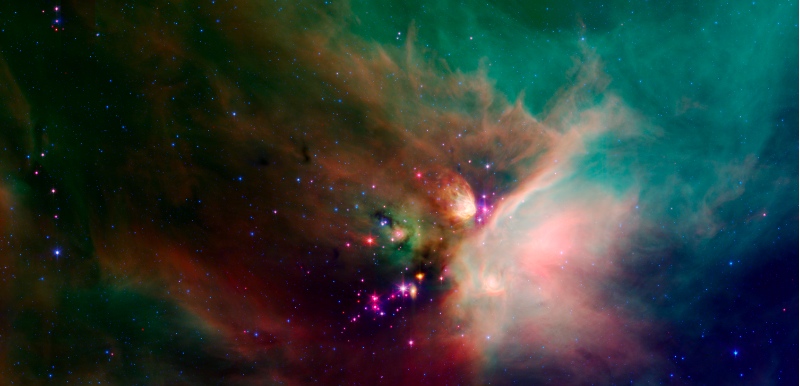

Astronomers have long been baffled by lasers that occur naturally out there in the universe, sending bursts of intense optical and microwave light streaming across the cosmos at specific frequencies. Scientists quickly realized that the atmospheres of stars and planets were generating laser light since they first began detecting them fifty years ago, but the mechanisms by which they do so have remained a mystery. Until now, that is. Physicists here on the home planet have created the first Earth-based laser made from a cloud of gas, reproducing for the first time these naturally-occurring space lasers.
Lasers are nothing more than a contained group of atoms (that emit light at a certain frequency) that are excited by inserting energy into the system. This light emission is triggered by bouncing light back and forth past the atoms, generally by placing mirrors at either end of the group of atoms. Sometimes the atoms are contained in a crystal, other times in an optical cavity that contains gaseous atoms, but the setup is generally the same: confined atoms plus light bouncing between mirrors through said atoms equals an emission of specifically tuned light.
But out there in space there are no mirrors, nor are the atoms in stellar or planetary atmospheres contained within a crystal or cavity–and this is what puzzled astronomers. But researchers have found another route to lasing that provides a clue. So-called random lasers have been developed in recent years that employ some kind of unconfined, disordered medium like a semiconductor powder to create laser emissions. In random lasers the light bounces around inside the medium based purely on the medium’s disorder without having to be confined or book-ended with mirrors.
It turns out naturally-occurring space lasers work the same way, but there’s still a catch: The powdered mediums used in random lasers are very different than gas clouds in space. And that’s the facet that researchers at the Institut Non Linéaire de Nice in Southern France have finally figured out. Using a cloud of rubidium atoms contained within a magneto-optical trap, the team has created an Earth-based laser from a gas cloud for the first time. When the team introduces light tuned close to rubidium’s expected emission frequency it goes bouncing around inside the gas cloud at random–just as it does in natural space lasers.
The ability to recreate this phenomenon in the lab will allow astronomers and physicists to examine this mechanism up close for the first time, but it could also have broader implications. Such a natural laser could lead to new kinds of artificial light made with gaseous atoms that currently haven’t been explored as potential laser light sources. That could spell new kinds of artificial light–the same kinds manufactured by the cosmos but on a much smaller scale.
Much more on this over at Technology Review.
